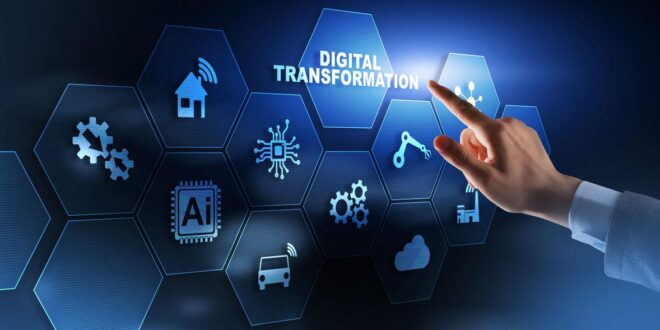A significant digital transformation has occurred in recent years, and nearly everyone has adapted to the digital world. While this has made minor changes in the lives of the people but looking at it from a bigger perspective, many things have changed. Things that needed pen and paper to communicate information between two parties are now being done digitally. EDI is the perfect example of how digitalizing information processing has helped various people grow their businesses.
EDI, or electronic data interchange, is one of the most used concepts in today’s world. And now, with the help of edi integration, saving expenses and increasing the sales of one’s business have become easier. When one meets the right match of EDI solutions to their platform, it becomes a perfect pair both in terms of efficiency and results. Reading below, you will better understand how EDI has helped the digital transformation.
How Has EDI Helped Digital Transformation?

Electronic data interchange has been an excellent step toward digital transformation. Processing data was one of the very first steps which were needed to bring about a change in the digital world. Further on, the digital world has only grown based on this data processing helping take transactions and their details. Some of the most helpful ways electronic data interchange has been implemented are in IoT sensors, blockchain, and artificial intelligence.
The IoT sensors have been encouragingly used to track shipments and have better visibility in real-time of the condition of the packaging. It is this tracking feature that has been implemented in blockchain as well. It helps in lowering the chances of chargebacks by tracking the data flow and resolving disputes.
One other place electronic data interchange has been implemented is artificial intelligence. Where it tracks all the information and events to identify events that do not align according to the expected results, the AI automatically accepts orders and returns. It also determines if a reshipment is needed, resolves any return issues, and places a new order for the reshipment accordingly. While all of this seems a lot, these are some of the most well-known implementations of EDI that have aided digital transformation.
Future EDI Trends

In the path of development, there are many things that get lost and those which people overcome. EDI stands as part of the base over which digital development has taken place. In recent years, digital transformation has gone by so fast, only for more different concepts to arise. Considering the development, electronic data interchange has played a significant role and has continued to do the same. With growing needs, electronic data interchange has also developed, studying which below are some of the future trends that electronic data interchange will follow
-
In-house Processing
With the alarming rate of growing businesses, the number of employees and the need for data processing has become much more important. In the past, these smaller companies could easily integrate electronic data interchange with the help of a third party to avoid paying higher prices for in-house processing. These same companies, when faced with the tremendous growth they have, third-party It is why these larger companies have started shifting back to in-house electronic data interchange processing, which gives them flexibility and comfort and processing a large amount of data.
Large business owners might have started in-house processing, but a significant number of people are still lower than these large business owners. Even though they do not require a simple electronic data interchange integration, they do need in-house processing but not the means for the same. It is why many EDI companies have started offering a monthly subscription for these companies to meet somewhere between their differences.
-
Heavier Demands
There have been businesses that are small but have a huge supply and demand chain. Such companies cannot shift to in-house electronic data interchange processing whenever required due to the absence of the needed means. Thus, to meet the demands of the supply-demand chain, these small businesses opt for EDI company subscriptions. The EDI companies then charge the companies according to the number of transactions and or monthly according to the plans available with the EDI company. Such a situation arises primarily with middle-sized companies looking for expansions yet always needing more funds.
-
EDI And API
With the ease of usage of API and how they are faster and do not need specialization to use the same, they have been coated as a forecast to end EDI. Yet electronic data interchange has come on top again by eliminating the issues faced by API by using it along with EDI. Electronic data interchange helps with batch processing, and API allows real-time processing, where combining both has resulted in a better approach to document transfer. With the rapidly shifting landscape of the technological world, EDI and API will start working together instead of competing to drive revenue and growth.
-
IT Shortages
With the market going forward and gaining experience in different concepts, experts noted that electronic data interchange projects would be a more significant problem. It is in comparison to API, which is deemed cheaper and faster yet less stable than EDI. The only challenge the market would face is the need for IT professionals specializing in EDI. But with the prevalent use of electronic data interchange in logistics and healthcare, there is no time soon it will be going anywhere. In other words, the chances of EDI disappearing are very slim as its use in a few sectors is elementary, yet it is needed crucially there.
Conclusion

Electronic data interchange integration has been around for more than 70 years. It was and is still one of the most sought-after concepts, and it only takes a little over a week to implement EDI integration. EDI has even worked with API, its competitor, to produce even better results, which has proven that EDI is not going anywhere soon. EDI has been successfully integrated with sensors and AI to develop future generations of technology further.
 Imagup General Magazine 2024
Imagup General Magazine 2024



